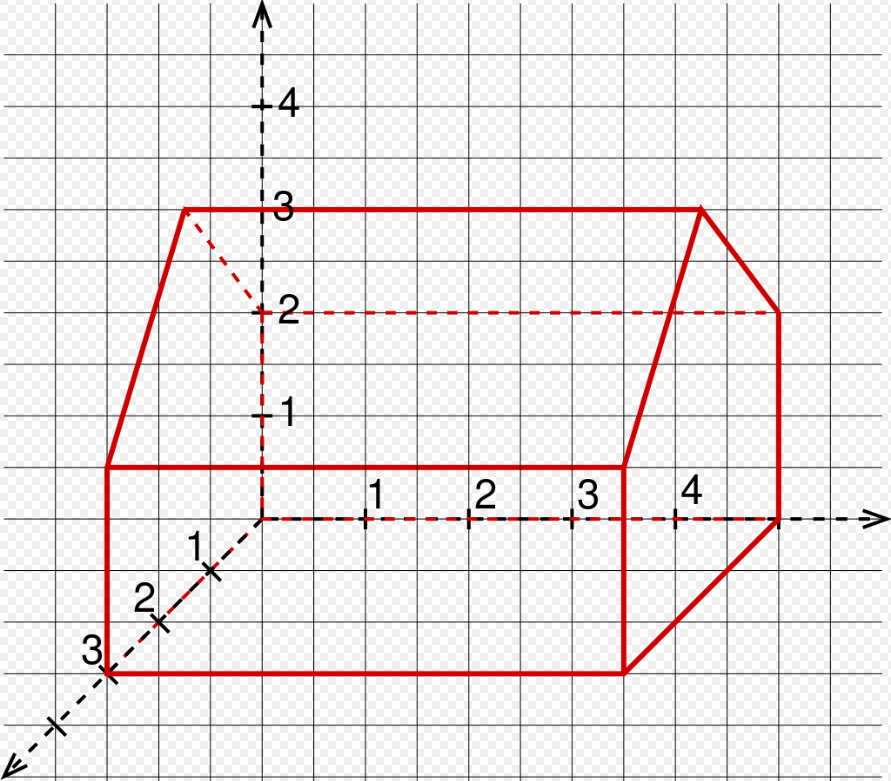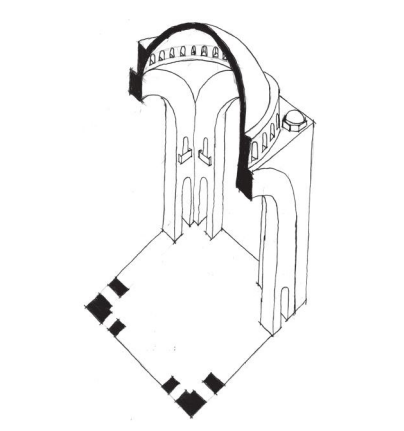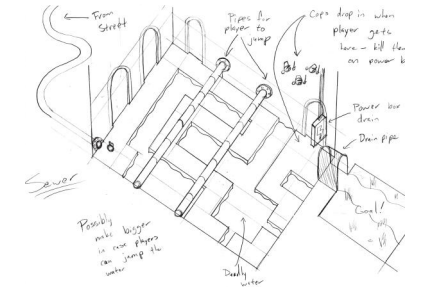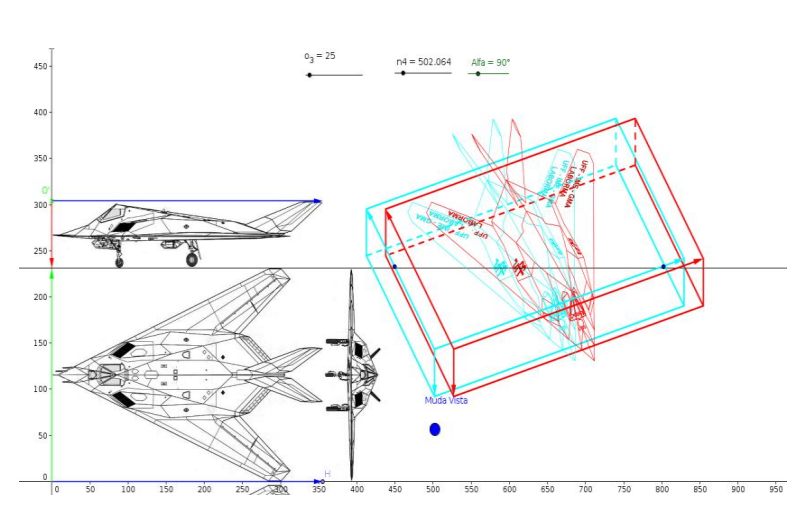Axonometric
TO DO: Gameplay Axonometric, what
also known as: Architectural drawing
Classification
- #medium/visual
- #method
- #roles/designer #roles/artists
- #used-by/designer #used-by/artist
- #tools/digital #tools/non-digital
Intent
- “Communicate the composition of space” (Totten, p.54)
- Represent the three-dimensionality of an object
Problem
General
- You possess a drawing of an object, but its dimensions remain unclear in relation to the surrounding space. There is a lack of three-dimensionality, making it difficult to visualize the object when modeled.
Specific
- For instance, you want to include a church in your level that players can enter. However, presenting only the outer front view, without revealing the interior in a 45-degree perspective, lacks depth.
- You prefer a drawing from an alternative viewpoint (possibly from the camera’s perspective) to convey the building’s purpose and display its architectural details.
Solution Approach
Solution Approach
- Use an axonometric projection to visualize the 3D space of the object and its environment.
Application
Input
- Various types of Drawings such as plans, sections, simple Sketches, more detailed sketches, and architectural drawings
- Inspiration drawn from the real world
- Proficiency in understanding 3D space and correctly representing it on paper or through a digital tool of your choice
Application
- Determine the desired angle from which you want to depict your object (e.g., a bird’s-eye perspective). Typically, a 45-degree angle is chosen to convey three-dimensionality.
- Accurately draw your object from this perspective:
- First, from the exterior view if necessary.
- Second, and more importantly, with a cross-section through the object, revealing its interior.
- A more mathematical approach:
- Take your object and draw a coordinate system within your drawing.
- Project the outer corners of your object onto the coordinate system and shift these points along the three-dimensional axis.
-
Connect the points with lines to the original object, resulting in an accurate three-dimensional axonometric representation of your object.
 (Geometrical Axonometric, Source: Wikipedia, link - @Ag2gaeh)
(Geometrical Axonometric, Source: Wikipedia, link - @Ag2gaeh)
Output
- An axonometric representation of your object, which can be a diagram, drawing, or sketch.
When to Use It
- When you want to visualize the three-dimensional space within your object.
- When you aim to clearly communicate a detailed concept of your object to your team, enhancing their understanding of your vision.
Relevant Roles using this model
Relevancy in the following processes
- Game Development
-
Gamespace Prototyping
Applicability
-
- Like any drawing method, it is beneficial for conceptualization during the early stages of game development, especially before you begin modeling your objects.
- It serves as a useful tool for team communication.
- Apply this method when planning a 3D game and need to arrange the spatial elements within your level effectively.
Pros and Cons
Pros:
- It facilitates the team’s understanding of your vision.
- It provides a valuable reference for artists, allowing them to model objects and locations as closely to the concept as possible.
- It can be implemented both on paper and digitally.
- Offers a more technical understanding of the level and assets.
Cons:
- Requires some level of artistic and mathematical knowledge.
- Demands a precise working style for accurate metrics.
- It’s primarily a conceptual design and still requires further development.
Relation with other Methods
- Drawing a Map because it shows part of the map in more detail
- Can include Symbols and Visual Language to enhance the sketch’s communicative power
Examples
-
A sectional axonometric
 _(Source: Totten 2019 - An Architectural Approach of Level Design, p.58)
_(Source: Totten 2019 - An Architectural Approach of Level Design, p.58) -
An axonometric drawing of a level with descriptions
 _(Source: Totten 2019 - An Architectural Approach of Level Design, p.59)
_(Source: Totten 2019 - An Architectural Approach of Level Design, p.59) -
The “computational anaglyphic method” that develops an axonometric 3D view based on the 2 images it was given as an input
 (Source: link p. 220)
(Source: link p. 220) -
Game perspectives can also be shaped by axonometric/isometric views. Here’s an example of that specific camera view:
 (Source: Age of Empires, 1997-2023)
(Source: Age of Empires, 1997-2023)
Relevant Tools
- Digital Art Tools like Photoshop, Procreate or any digital drawing tool
- Non-digital Design Tools, pen and paper
- Computational Tools like proposed in this paper
Relevant Literature
Totten 2019 - An Architectural Approach of Level Design
Wikipedia about the definition of an Axonometric Projection: Axonometric Wikipedia Links
Stereo Orthogonal Axonometric Perspective for the Teaching of Descriptive Geometry
Isometric Projection in Game Development
...